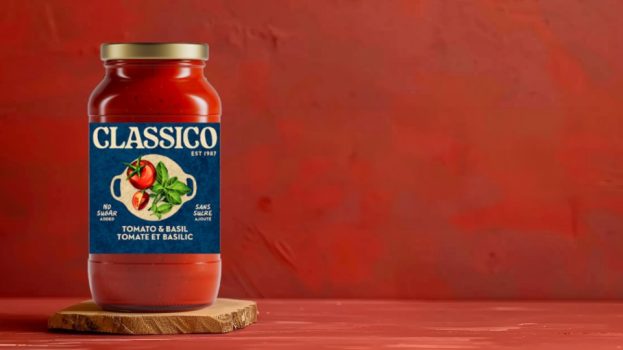It used to be that to sell sneakers, all you needed was a top sports star and a solid performance running shoe. But an onslaught of new and revamped players, some focused on their fashion-forward styling, have been heating up the category in the last few years.
As a result, marketers are upping the ante by sponsoring entire sports teams, teaming up with high-profile music stars and launching retail chains around their brands.
As John Horan, publisher of West Chester, Penn.-based Sporting Goods Intelligence, notes, ‘Five or eight years ago the performance/technical aspect was what sold the shoe to the fashion market. That still sells to athletes, but not to the fashion market. It’s not a situation where one size fits all anymore.’
Nike is still undoubtedly number one, as it has been for the last few years. According to Sporting Goods Intelligence, the company had close to 39% of the market in 2002 with over $3 billion in sales in the U.S.
However, smaller brands like Puma, K-Swiss and Converse are making inroads. K-Swiss gained over 21% in sales last year and Converse, which reintroduced its classic-style shoes, gained over 36% in sales in 2002. Though Puma captured less than 2% of the market during the same period, the old school sneaker brand had close to a 48% increase in sales over 2001.
Puma found success after it mined its archives and remodelled its traditionally performance-based soccer shoes. The brand’s current mandate is to ‘mix the influences of sports lifestyle and fashion.’ Currently, its most popular shoe is the Mastro, a contemporary take on an early 1980s lightweight track shoe.
In Canada, Puma is aiming to make more of a presence. In April, the brand opened a Puma concept store in Toronto and there are talks to open up other shops across Canada, says Ritch Benford, VP, general merchandise manager for Montreal-based Puma Canada. The firm currently has retail stores in hotspots New York, Paris and London.
Sponsorship is a key component of Puma’s marketing strategy. For example, the company sponsors the Jamaican Athletics Federation and will also outfit Jamaican athletes for the upcoming Athens Olympics in 2004. Its current print ad campaign features Jamaican athletes, along with the country’s colours of green, black and gold. Benford says Jamaican culture ‘combines sport lifestyle and fashion’ and is therefore a good brand fit.
The fashion edge also comes into play through the media buy: rather than place ads in Sports Illustrated, the ads run in hipster publications Details and Nylon.
Other sports-related tie-ins include outfitting the entire Canadian Football League and sponsoring footwear for Formula One racing teams, as well as some waitstaff in Montreal restaurants during the Grand Prix in June. Puma also sponsors the Italian national soccer team. Benford says his company is looking at ways to build presence in Toronto and Montreal’s Italian communities, where soccer is huge.
He says another goal is to get the shoes and athletic gear into the hands of ‘fashion innovators’ in the TV, film and music industries. Benford explains that it takes a more ‘guerrilla than specific’ approach to getting product to the right people: ‘We’re better off as a smaller brand to have a great selection of people wearing Puma because they adore it, rather than being paid to wear the brand.’ Benford says they are talking with Fashion Television, as well as the Toronto International Film Festival to explore opportunities.
On the other hand, Reebok is banking on big-name celebrity endorsers – both in music and sports – and product seeding at gyms to push its sneakers. The brand recently won the right to outfit the entire NFL and NBA, says Micki Rivers, marketing manager at Reebok Canada. ‘Every single uniform has the Reebok ‘vector’ on it,’ says Rivers. As well, Rivers notes the brand will begin outfitting the Toronto Raptors next year.
On the music scene, the company recently partnered with Canadian R&B sensation Shawn Desman, to launch its ‘Amaze’ line of classic footwear, which also connects to sports via its colour match-ups to NBA jerseys.
Rivers says Desman fits well with the brand since he appeals to the sports-minded male demo as well as the female target. ‘The sell-through has been very strong,’ she says. Desman’s video for the hit song ‘Shook’ meanwhile, was intercut with the Amaze shoes and made into a 15-second commercial. Previously, Reebok launched shoe lines with Canadian rapper Choclair and American rapper Jay-Z.
At a grassroots level, Reebok has partnered with gyms in Toronto, including downtown boutique gym Diesel. As well, the brand partnered with Toronto Maple Leafs’ Gary Roberts to create Reebok’s Station Seven gym in Toronto.
All 125 members of the gym never have to bring their gym gear – clothing and shoes, courtesy of Reebok, are always fresh and clean and at-the-ready for their next workout. Over at Diesel, a Reebok fashion show launched the stylish gym last fall and currently, fitness trainers and staff are outfitted with Reebok footwear. ‘Gym instructors are good key influencers,’ says Rivers.
Fila, meanwhile, used to be known as a fashion brand, but its current focus is on leveraging the performance aspect, says Fila Canada marketing manager Chris Kelly. As a result, Fila’s marketing initiatives include sponsoring junior basketball and tennis teams across Canada.
As well, Fila sponsors the Ontario Tennis Association, and was the gold sponsor at the AT&T Women’s Tennis Championship. Kelly says tennis makes sense with its current sports positioning, since ‘Fila is known as the best in tennis apparel.’ Further, Kelly notes, the brand has sponsored the sport ‘since the days of Bjorn Borg.’
Cundari Advertising recently launched a print ad campaign for Fila Canada that broke at the end of March. The ads are currently running in magazines like Elle Canada and Chatelaine, as well as sports publications and will also launch as posters in major cities across Canada.
The ads show various sporting types – a yoga aficionado, a boxer and a weight lifter – engaged in their sport. Dennis Forbes, CD at Toronto-based Cundari, says the agency specifically cast people who were athletes, as opposed to model types and presented them against stylized illustrations that symbolize their dynamic world.
Working from the tagline, ‘For some, sport isn’t a diversion…it’s a way of life,’ Forbes says the ads seek to convey Fila as a brand ‘for people who are really into sport.’
Some companies have found success by making design a priority over function. For instance, Adidas recently launched its new SLIV shoe, which is the brand’s roster of sports luxury (SL) concept shoes.
The SLIV is billed as ‘a lifestyle shoe with a sport-inspired design.’ It’s being promoted by a transit, in-store and guerrilla campaign by TBWAToronto that launched mid-April.
The creative, comprised of crumpled-looking posters, incorporates graffiti-like scrawled messages like ‘All I dream about is SL’ to convey the longing for the shoe felt by the SLIV’s owner.
There are many tactics in the sneaker category, but who has the best marketing strategy? Strategy asked some people in the know for their opinions.
John Horan, publisher, Sporting Goods Intelligence, West Chester, Penn.
If you look at the companies that have been growing – Puma, Converse, K-Swiss – they have more of a niche strategy with tighter distribution.
In the last couple of years, [you’ve seen them] as well as some of the bigger companies [invest in] more real fashion marketing with limited edition kinds of shoes.
They sell at high-end stores – as opposed to the massive Foot Locker business – and have tried to create more buzz around the buzz. [In some cases] they’ve hooked up with designers. [For instance] Adidas hooked up with Yohji Yamamoto. It’s more of an intense marketing effort.
Everybody is bringing retro back. [Brands are] taking some fairly basic shoes, recolouring them and changing the materials. They try to hit a mid-range price point and they call it retro. That adds a fashion flair.
We’ve certainly seen much more interest in the moderate price point footwear – average prices have been dropping over the last couple of years.
Jeff Spriet, president, Chokolat, Toronto
Looking at what Puma’s doing, I really like their stuff for 2003. But if you take a number three or four authentic athletic brand and reposition it to be more of a sport/lifestyle or fashion brand, you’ve just taken yourself from a universe where you had three or four legitimate competitors and just opened it up to a myriad of fashion brands.
Just a few years ago, Puma had signed [Toronto Raptor] Vince Carter. Obviously with their financial troubles, they got away from that, but at the time, they signed some major-league deals and they were signing the right athletes.
I think if they had kept that course, that would be a better long-term strategy – one that puts them in a scenario where they don’t have to reinvent themselves every 18 months. They would have been legitimized on the court or on the field with good sports marketing assets and they’d be working on becoming a strong number two to Nike or eventually overtaking Nike.
They’ve moved completely away from that and become more of a trendy brand that may look good on the balance sheet today, I just don’t know whether it will tomorrow.
Andrew Turner, president, Batcave, Toronto
Everybody in this category works on an aspirational target audience of some sort. It’s just [a matter of] choosing which one you want to go after – whether it’s sports, music, etc.
Nike is firmly entrenched in the sports market [while] Puma is going after music, certainly in the U.S. Nike has some neat icons – everybody from Spike Lee to Michael Jordan. It probably executes better than anybody. They have a long-term strategy and they stick to it.
Just like sports, certainly with the youth market, music crosses everybody’s life in some way or another. Puma used to be [about] soccer years and years ago and I think they’re trying to get into the music stuff. I just don’t think they’ve got a firm strategy in place yet.
Music can work really well for brands but they have to understand the positioning of the artists and how they impact people’s perception of the brand. The artist perception changes very fluidly, so it’s important for brands to figure out a genre of music they want to be [associated with] rather than an artist. If you [do that], you can have a long-term strategy. It’s cool that [Reebok] has Shawn Desman, but [if] his star fades, where does that leave them?























